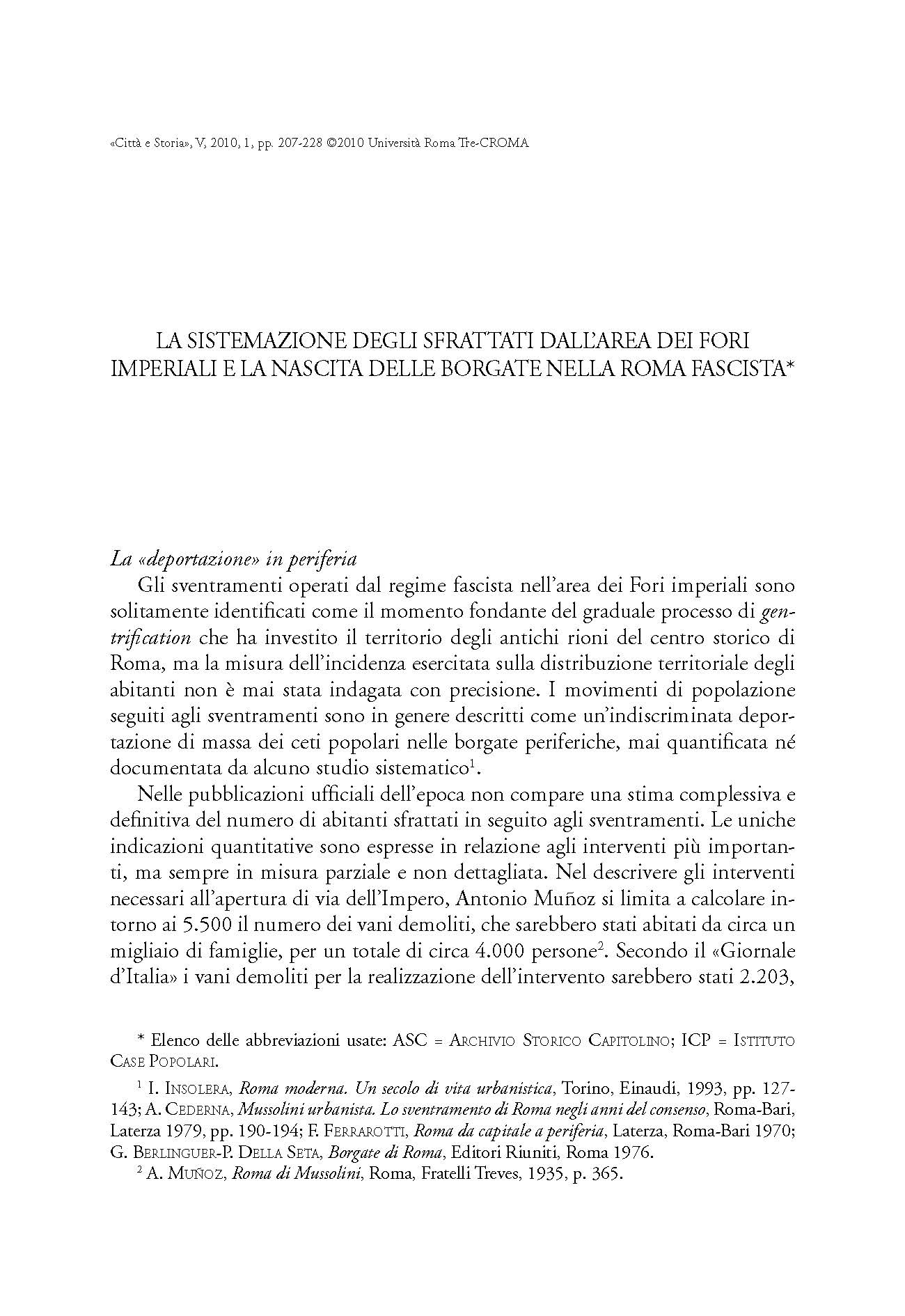La sistemazione degli sfrattati dall’area dei Fori Imperiali e la nascita delle borgate nella Roma fascista
6,00 €
The social effects provoked by the giant transformation which changed Rome town planning during the fascist administration, carried out through the so called “sventramenti”, have never been deeply investigated by researchers. This research intends to reconstruct new destination of the evicted families to evaluate the effects of such a transformation on the dynamics of the territorial distribu-tion of the population, The analysis of the state administrative machinery which directed the reallo-cation of the evicted families has allowed to highlight the role played by the “sventramenti” in the process of social division of the population.
In an attempt to work out a complete evaluation of the “deportation” phenomenon of the dwellers of the historic centre to the outskirts, we can state that not only it turns out be of less importance than traditionally believed but, most of all the fruits of a much more complex social selection process, partially voluntary and partially explicitly started off by the state intervention policy in the housing sector. In fact, the evicted citizens were reallocated on the basis of a strict criterion of separation, by which the final destination of the citizens was directly connected with their rank.
The social effects provoked by the giant transformation which changed Rome town planning during the fascist administration, carried out through the so called “sventramenti”, have never been deeply investigated by researchers. This research intends to reconstruct new destination of the evicted families to evaluate the effects of such a transformation on the dynamics of the territorial distribu-tion of the population, The analysis of the state administrative machinery which directed the reallo-cation of the evicted families has allowed to highlight the role played by the “sventramenti” in the process of social division of the population.
In an attempt to work out a complete evaluation of the “deportation” phenomenon of the dwellers of the historic centre to the outskirts, we can state that not only it turns out be of less importance than traditionally believed but, most of all the fruits of a much more complex social selection process, partially voluntary and partially explicitly started off by the state intervention policy in the housing sector. In fact, the evicted citizens were reallocated on the basis of a strict criterion of separation, by which the final destination of the citizens was directly connected with their rank.

